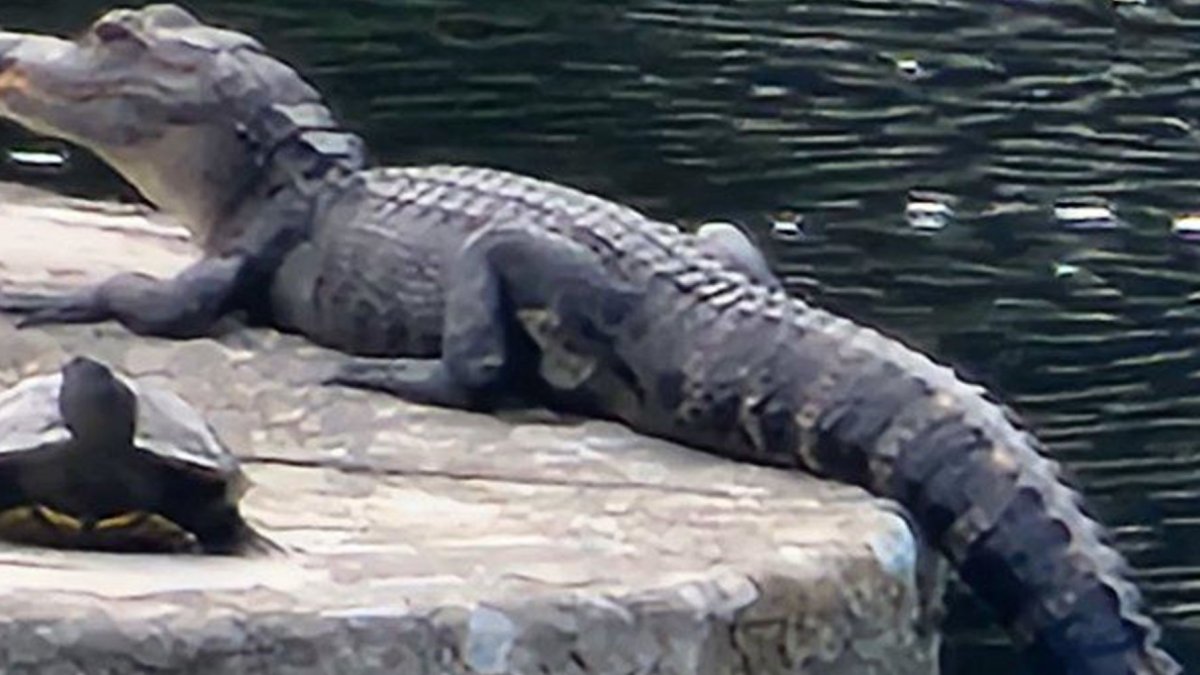Ignacio Blanco visits Caballero Rivero Woodland West Cemetery at least twice a year and says he is always very quiet, but the last time he saw something interrupted his peace. “I see an alligator, an alligator basking in the sun in the middle of the pond,” says Blanco.
There, in the middle of a small lagoon inside the cemetery, was an alligator basking in the sun. “I know we live in Florida and you always have to be careful about that, but it’s different when you see it,” says Blanco.
Although there were signs at the water’s edge, Ignacio Blanco felt he had to do something. “I contacted the ladies in the office, they were very nice,” she says.
Cemetery management told us they called the Florida Fish and Wildlife Commission, known as the FWC, which is responsible for disposing of alligators deemed dangerous. “We have to understand that the alligator or the alligator is common in Florida…you have to understand that and learn to co-exist with the alligators because they are here and it’s their natural habitat,” says George Reynaud, a Fish and Sea. Florida Wildlife Commission.
In this link, the FWC explains how to coexist with alligators: https://myfwc.com/conservation/you-conserve/wildlife/gators/spanish/
Much of the agency’s job is to teach this to the public, but they say it’s rare that an alligator could pose a risk if it’s lost its natural fear of people because it’s been illegally fed. . “Once it’s been identified at this point, you need to permanently remove that alligator or caiman from that lake or channel,” says Reynaud.
If so, you can call 866-392-4286 and they will dispatch a team to remove it permanently.
It was a team like this that removed the alligator that recently attacked an 85-year-old woman in St. Lucia County. The woman was walking her pet near a community lake when the alligator attacked her pet and when she tried to save it she ended up losing her life. “Incidents with alligators or alligators or a bitten person are not common,” says Reynaud.
According to the FWC, between 1948 and 2021, only 26 of 442 unprovoked bites in the state resulted in human deaths; including that of a 2-year-old boy who was playing by a lake at Disney in 2016. “When Orlando arrived, my child was the same age,” says Ignacio Blanco.
The FWC says most bites can be avoided by staying away from places where we know an alligator might be. “If you have a pet, always keep it on a leash and keep a safe distance from the water because if it is on the shore or if you let your pet enter the water to swim it may attract water. alligator or the alligator because it represents the natural prey of the alligator or the alligator”, explains Reynaud.
In the case of the cemetery, it was not determined that the alligator was large enough or posed a risk to the community, so it was not removed. Ignacio Blanco says all he wants is for people to be vigilant. “Let them know that, not that maybe, there’s an alligator,” Blanco says.
Usually, for an alligator or alligator to be removed, it must be at least 4 feet tall. Saint Lucia was about 11 feet long.

